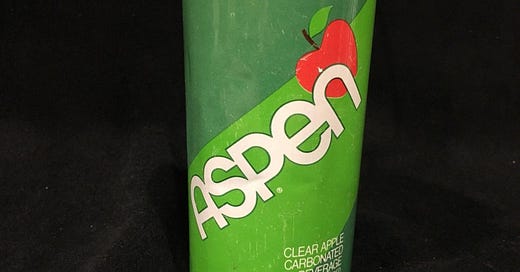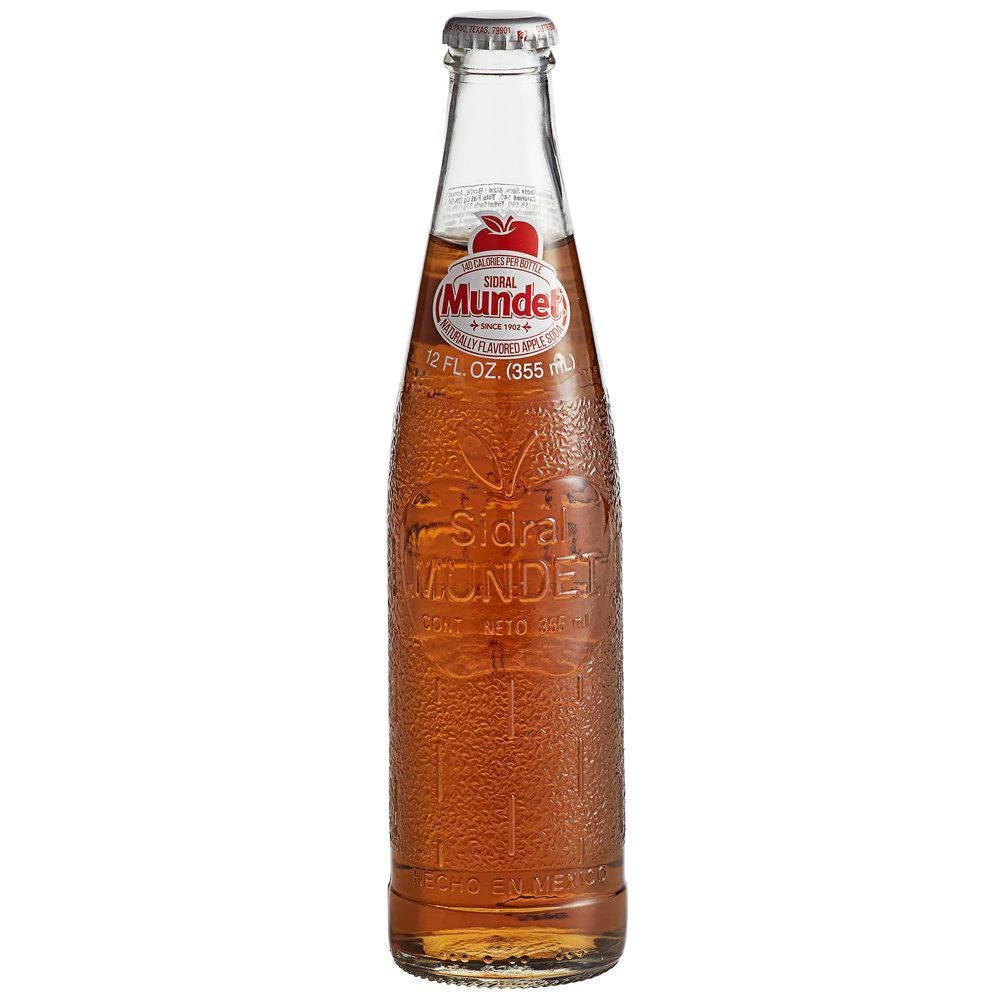Apple Soda
The idea on its face has a certain power. Many Americans were given apple juice early on in the transition from formula to hard food and beverages other than mother’s milk. Apple juice has a clean taste, a good bit of natural sweetness (mothers buy the brands without added sugar), a pleasing tawny translucency, and a happy odor. And for much of American history, the populace had a taste, when the law permitted, for fizzy hard cider. You jettison the alcohol, but keep the fizz. Then import that morning in the orchard flavor of apple juice—the clarity of color. And then make it a touch sweeter with a charge of sugar (we are not infants being protected from addictions after all). Many a beverage company executive have rehearsed these thoughts and concluded that apple soda was a sure fire market master.
Then why have all of the incarnations of apple soda failed over the years? Does anyone do the old mid-20th century DIY “Zippy Apple Soda” any more. The one you make yourself with 3 cups apple juice to one cup carbonated soda with a shake a cinnamon and maybe a lemon peel to give it spice.
After World War II Dr. Roy Marshall of Michigan State started making apple juice syrups, intense concentrates that could be used by food processors or soda fountain proprietors to make apple soda. [“Sees Apple Treets in Soda Fountains,” Grand Rapids Press (February 1, 1946), 17]. There had been experiments prior to Marshall’s initiative. During the decade before Prohibition, the cagiest of cider makers—Cleveland Cider Co.—began making non-alcoholic “Artificial Apple Soda” in anticipation of the shut down of cider companies. Needless to say it proved an unsatisfactory substitute for serious cider heards.
The 1970s and 1980s saw the big companies go all in. Pet Foods launched Musselman’s Applelicious sparkling apple soda. “It’s a whole new first for quenching a thirst. Light, crisp and refreshing. With the great taste of apples. America’s favorite fruit.” Shasta presented its “Red Apple Soda”. A generation later Jones Beverages would offer “Green Apple Soda.” In the Southwest “Apple ‘Nocker Apple Soda” appeared on 1970s grocery shelves. Perhaps the most exquisite of these mass market sodas was pepsico’s Aspen apple soda launched in 1978 and shut down in 1982. It was clear. It was sharp. And the flavor sparkled. They’ve tried reinstating apple in their Slice line, but who has gone to a store seeking it out? For reasons entirely mysterious, Americans did not fall for this fusillade of carbonated apple product.
Should I close be observing that Snapple Apple and Snapple Green Apple are among the loss leaders in the line of beverages. It’s the fruit flavors with tea that are keeping that company solvent. And what kind of apple does that liquid taste like? Red Suspicious?
The irony is that apple sodas are popular in other places in the world. Bar Tenders know quality. They don’t reach for Snapple Apple—the Mexican apple soda Sidral Mundet is the choice. It has been a favorite since 1902.






You gave me horrible flashbacks with the image of Aspen Soda. Even as the sugar-addicted American child that I was, I couldn't abide that nastiness!